
Judge approves class-action settlement requiring Aetna to cover IVF for same sex couples
Nancy Flanders
·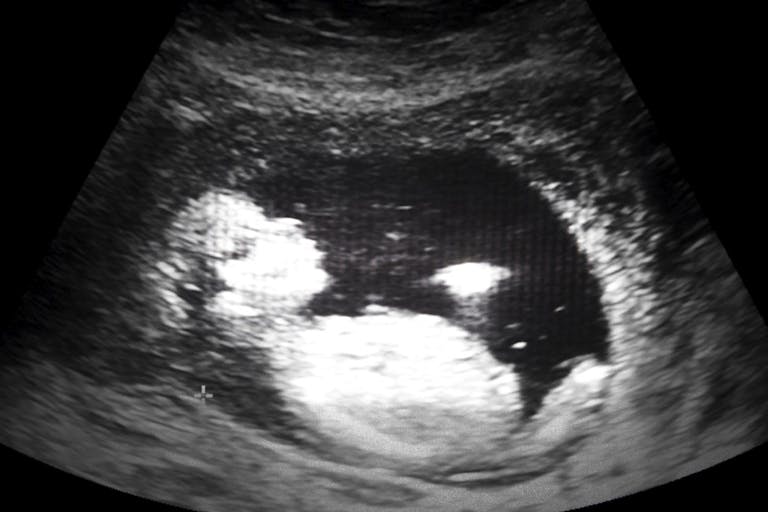
The latest reported US abortion numbers reveal a shocking 2,800 abortions daily
How many abortions are happening in the United States every year? The answer is a bit more complicated and difficult than most people would expect.
There are several reasons for this: one is because the reporting of abortion data is not required by federal law; states make their own decisions as to whether they will track and report abortion statistics. Another reason is because there have typically been two main agencies tracking and reporting national abortion data — the Guttmacher Institute and the Centers for Disease Control and Prevention — and those agencies gather data differently and end up with vastly different counts.
The reporting of abortion data has become no easier since the overturning of the infamous Roe v. Wade Supreme Court decision two years ago, but Live Action News has summarized the most recent data below. What it reveals is that since the reversal of Roe, abortions are rising to numbers we have not seen in over a decade. There are also many reasons for this — one of which is the increased incentivizing of abortion by state entities, abortion funds, and even private businesses in the past two years. Another is the Biden administration’s loosening of safety standards regarding how the abortion pill may be dispensed.
Abortion By the Numbers
Guttmacher 2024 data: Guttmacher’s latest “underestimated” 2024 figure was 1,038,100 “clinician-provided” abortions – which doesn’t include all abortions. This new 2024 figure equates to 2,844 abortions daily, nearly 119 per hour, nearly two per minute, and slightly more than one every 30 seconds.
Guttmacher 2023 data: The Guttmacher Institute recorded 1,037,000 abortions for 2023 (2,841 abortions daily in the U.S. — 118 abortions per hour, nearly two per minute, and one every 30 seconds.) That same year, 642,700 chemical (abortion pill) abortions were recorded by Guttmacher (53,558 a month, 1,761 daily, 73 hourly, and one abortion pill abortion every 49 seconds.)
CDC 2022 data: The Centers for Disease Control and Prevention (CDC) recorded 613,383 abortions for 2022 (latest data available).
Guttmacher range data (50 years) — 1973-2024: The Guttmacher Institute recorded 64,019,025 abortions.
CDC range data (50 years) — 1973-2022: The Centers for Disease Control and Prevention (CDC) recorded 48,997,614 abortions (latest data available).
From 1973 to 2021, the CDC recorded 465 known women’s deaths from legal abortion.
Who Publishes Abortion Data
Traditionally, abortion data has been compiled by two organizations: The Guttmacher Institute (a former Planned Parenthood “special affiliate,”) and the CDC.
Guttmacher has funneled at least $100 million to Planned Parenthood, and did not begin publishing abortion data until 1973. The organization previously utilized responses to abortion provider surveys for its abortion reports. Then, in late 2023, after nearly 50 years of using the same methodology, Guttmacher changed this methodology and began publishing monthly abortion estimates.
Guttmacher did this despite describing this new methodology as less reliable than what had been previously used, writing that “The Monthly Abortion Provision Study was designed to complement the APC and other data collection efforts by producing a slimmer portfolio of data but at a much quicker pace. Its design is responsive to the needs of policymakers, advocates and other stakeholders in the fast-changing landscape of US abortion policy and provision and attempts to minimize the time required of staff at surveyed facilities.” (emphasis added)
In other words, for political expediency, Guttmacher chose to change its reporting methodology to a less accurate method.
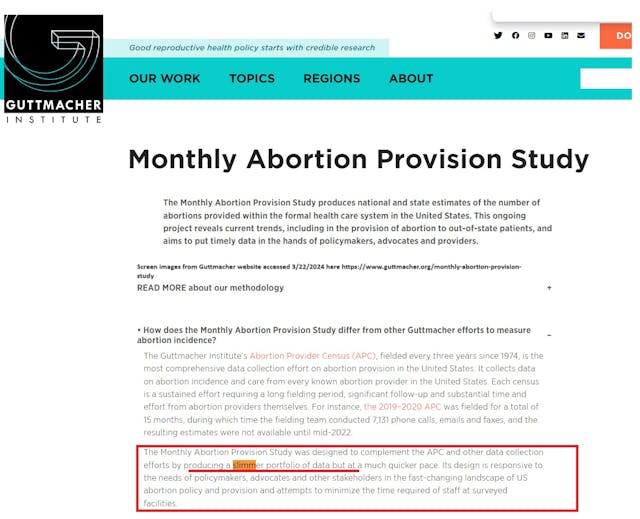
“The study’s estimates are generated by a statistical model that combines data from samples of providers with historical data on the caseload of every US provider. As more data are collected each month, estimates for past months become more precise. Each estimate is expressed as an uncertainty interval, which quantifies our confidence that the true value falls within a particular range,” Guttmacher wrote in 2023.
The pro-abortion group also noted that its 2024 monthly study “estimates the number of clinician-provided abortions that take place each month in each US state without a total ban,” but excludes “any abortions provided in states with total bans” as well as those obtained through online pharmacies or other means.
In 1969, years prior to Roe v. Wade, the CDC began an abortion surveillance branch to document the number and characteristics of legally obtained abortions. To date, the CDC relies solely on data voluntarily reported from the states, which individually set the standards for abortion reporting.
Currently, not all states report abortion statistics, and since the Dobbs decision in 2022, some states (Michigan, Minnesota) are planning to either stop reporting or scale back what data they publish. Therefore, there are large disparities in abortion data state by state. Some states require no reporting whatsoever, and others collect a variety of data on age, race, gender, gestation, complications, and other categories. As such, Guttmacher’s overall numbers tend to be more comprehensive.
Since Dobbs, two agencies have begun to publish estimated abortion data: the Guttmacher Institute and the Society of Family Planning (SFP), the latter of which was founded in 2005 thanks to a generous contribution from the Packard Foundation, and is heavily funded by the Buffett Foundation.
Guttmacher’s abortion data previously updated about every two years, but since Dobbs, the pro-abortion organization has published monthly abortion estimates on a regular basis. CDC data is due to update in November 2024.
National Abortion Data
A September 2025 update from Guttmacher shows that there were more abortions in both 2023 and 2024 than previously reported. But that wasn't the end of it; an October 2025 revision has already been added — revealing additional numbers from 2023, 2024, and a half-year for 2025.
The graphic below does not yet reflect the latest change:
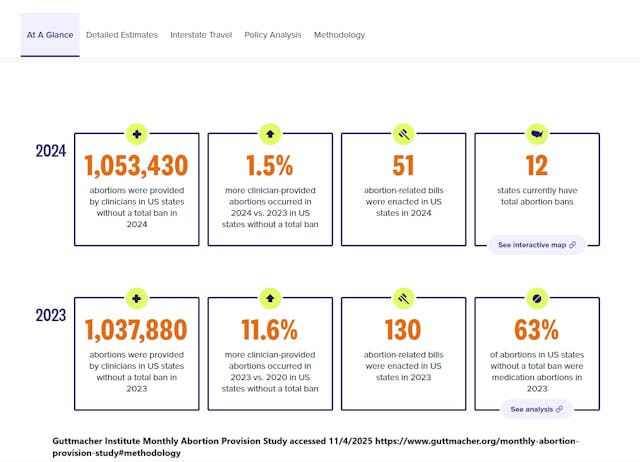
October's revision shows:
2023: 1,037,950 (up less than 1% from the 1,037,000 previously reported), resulting in nearly 2,844 abortions per day, nearly 20K per week, and over 86K per month.
2024: 1,053,470 (up 1.5% from the 1,038,100 previously reported). This shows an estimated 2,886 reported abortions per day, 20,259 per week, and nearly 88K a month for that year.
These updated numbers replace the numbers previously reported below.
In April of 2025, the Guttmacher Institute published a Monthly Abortion Provision Study for 2024 showing “1,038,100 clinician-provided abortions in states without total abortion bans in 2024, an increase of less than 1% from 2023” (emphasis added). Guttmacher claimed that “[t]he overall stability in the number of abortions in states without total bans continued despite shifts in policy that have increased obstacles to accessing this care in many states.”
This new 2024 figure equates to 2,844 abortions daily, nearly 119 per hour, nearly two per minute, and slightly more than one every 30 seconds.
The 2024 figure replaced a slightly lower estimate of 1,026,690 abortions published by Live Action News in March and an updated estimate of 1,037,000 abortions for 2023 published in May of 2024, which Guttmacher claimed occured in the “formal health care system.”
The 2023 data represented “a rate of 15.9 abortions per 1,000 women of reproductive age,* and is an 11% increase since 2020 [930,160 recorded in 2020], the last year for which comprehensive estimates are available. It is also the highest number and rate measured in the United States in over a decade,” Guttmacher reported in May 2024.
“It is important to note that these annual estimates are almost certainly an undercount, as they include only those abortions obtained within the formal US health care system: at brick-and-mortar health facilities, such as clinics or doctor’s offices, and via telehealth and virtual providers,” Guttmacher added.
The CDC’s most recently available data for 2022 recorded 613,383 total abortions nationally from 48 reporting areas, a 2% decrease from the 625,978 abortions reported by the CDC in 2021.
Abortions Since 1973
Abortion data reported in the United States (1973-2024) was estimated to have reached over 64 million since the Roe v. Wade Supreme Court decision forced legalized abortion upon every U.S. state.
However, in the fall of 2025, Guttmacher updated abortion numbers for 2023 and 2024 plus published a half-year estimate for 2025, we estimate that from 1973 to June of 2025, nearly 65 million preborn children have lost their lives to abortion — and likely many more deaths weren't counted. Roe fell nearly 50 years later on June 24, 2022, when the U.S. Supreme Court ruled in the Dobbs v. Jackson Women’s Health Organization (JWHO) case that Roe was “egregiously wrong from the start.”
Live Action News cautions that the latest updated numbers are estimates and could change again.
Abortion data reported in the United States (1973-2024) is now estimated to have reached over 64 million since the Roe v. Wade Supreme Court decision forced legalized abortion upon every U.S. state. Roe fell nearly 50 years later on June 24, 2022, when the U.S. Supreme Court ruled in the Dobbs v. Jackson Women’s Health Organization (JWHO) case that Roe was “egregiously wrong from the start.”
As staggering as the numbers are, abortions taking place illegally in states with pro-life protections are likely either undercounted or not reported at all.

Abortion Pill Numbers
In March of 2024, Guttmacher estimated that the abortion pill had accounted for 63% of abortions in 2023, a 45% increase from 2017.
In 2023, Guttmacher’s abortion data revealed a whopping 642,700 chemical (abortion pill) abortions occurring that year. This translates to an abortion pill count of 53,558 monthly, 1,761 daily, 73 hourly, and one abortion by pill every 49 seconds in 2023. However, in February of 2025, that number was updated to 648,500, which translates to an abortion pill count of 54,042 monthly, 1,777 daily, 74 hourly, and one abortion by pill every 49 seconds in 2023.
The research from Guttmacher’s Monthly Abortion Provision Study reiterated that its abortion pill counts don’t include those that “take place outside of the formal health care system” or which are “mailed to people in states with total abortion bans.”
“While there are no comprehensive data on the number of self-managed medication abortions in the United States, evidence suggests they have been increasing in the past several years. Therefore, the total count of medication abortions nationally is higher than our count of those offered within the formal health care system,” Guttmacher added.
Previously published data by the Food and Drug Administration (FDA) revealed that from 2000 through the end of December 2022, “approximately 5.9 million women” used the abortion pill mifepristone in the U.S. for “medical termination of pregnancy.” Updated data indicates that an additional 1.6 million more preborn babies were aborted by pill between 2022 and 2024, an increase of nearly 103% since 2018. According to a February 2025 update published by the FDA, since 2000, “The estimated number of women who have used mifepristone in the U.S. for medical termination of pregnancy through the end of December 2024 is approximately 7.5 million women.”
And according to published percentages for ER visits on mifepristone’s 2023 label, 2.9 to 4.6 percent of women who take abortion drugs end up in the emergency room, indicating that abortion pill ER visits could be in the tens of thousands every year. In addition, the FDA’s medication guide acknowledges that as many as seven percent (7%) of women will need surgery after taking mifepristone “to stop bleeding” or to complete the abortion.
Planned Parenthood Abortion Numbers
Planned Parenthood’s 2022-23 annual report has revealed that the abortion corporation committed a total of 392,715 abortions that year. In 2025, Planned Parenthood released its 2023-24 annual report, showing that abortions increased to 402,230. This is the highest number recorded to date.
During that time frame, Planned Parenthood held 40% of the abortion market share, killing an average of 1,076 preborn babies every day, nearly 45 every hour, and one every 80 seconds in 2022-23. In 2023-24, those numbers were 1,102 preborn human beings killed daily by abortion — nearly 46 per hour, and one every 78 seconds.
While Planned Parenthood’s report does not breakdown how many abortions were committed by the abortion pill, a recent claim from the president of Planned Parenthood has indicated that 70% of abortion sales (nearly 285,000 in 2023-24) at Planned Parenthood are now committed by this method.
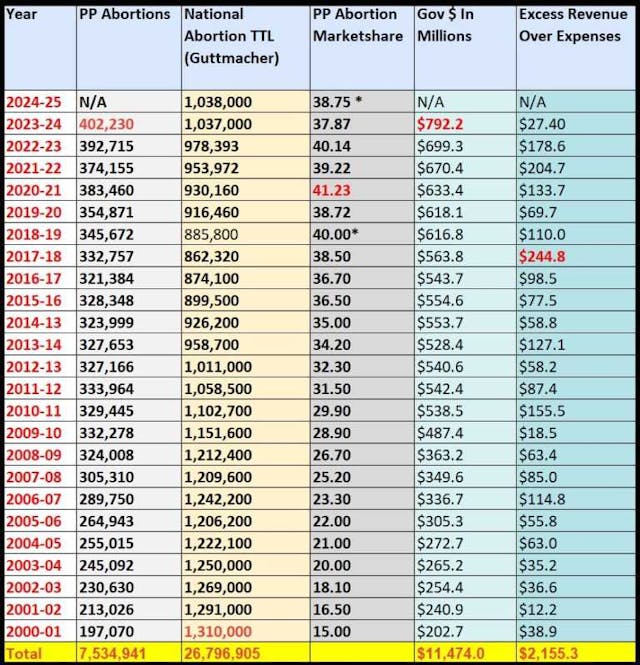
According to the 2022-23 annual report, Planned Parenthood received nearly $700 million in taxpayer dollars — $1.9 million dollars from U.S. taxpayers every day. That number rose by 13 percent in the 2023-24 report, to a whopping $800 million.
And while the abortion corporation serviced fewer clients with decreasing legitimate health services, in 2023-24 Planned Parenthood committed over 57 abortions for every one prenatal care service, and killed over 187 preborn babies for every one adoption referral.
Since 2000, Planned Parenthood has committed over committed over 7.5M abortions (7,534,941) and received nearly $11.4B from taxpayers while accumulating nearly $2.2B in excess revenue.
Later Abortion Statistics
A majority of abortions are now committed early in the pregnancy, well before 15 weeks gestation. In 2021, Guttmacher estimated that 81% of abortions that year had occurred at nine weeks of pregnancy or earlier.
In 2021 and 2022, while the CDC’s abortion data did not specifically break down later abortions at 15 weeks, Live Action News previously documented that in August of 2021, a review of CDC data by Guttmacher had estimated “that between 6.3% and 7.4% of all U.S. abortions are obtained at or after 15 weeks of pregnancy.” These percentages were confirmed in 2024, when Guttmacher published the graph below:
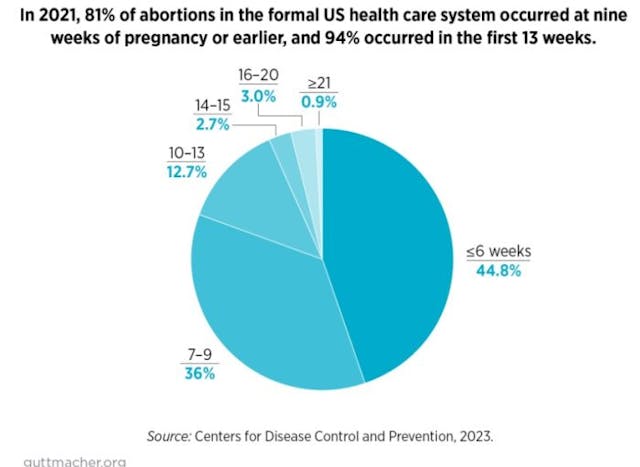
Based on Guttmacher’s updated abortion numbers for 2024 (1,038,100), it could be estimated that between 65,000 and nearly 70,000 are committed every year at or after 15 weeks, in the second and third trimesters of pregnancy. This brings the daily national death toll for babies killed at or after 15 weeks to nearly 200.
Abortion at or after 21 weeks is estimated to be about 1% of all abortions. But this is no small number and translates into an estimated 10,381 babies killed in 2024 by violent abortion at or after 21 weeks of pregnancy (using 2024 Guttmacher data).
Read more about 2023 data at Live Action News here.
Abortion Client Characteristics
Live Action News previously reported characteristic data summarized from Guttmacher (2014*) and the CDC (2021^), and has now added CDC (2022+) but in (2024#) Guttmacher published an update to reflect data collected between June 2021–July 2022. Categories were updated in the image below:
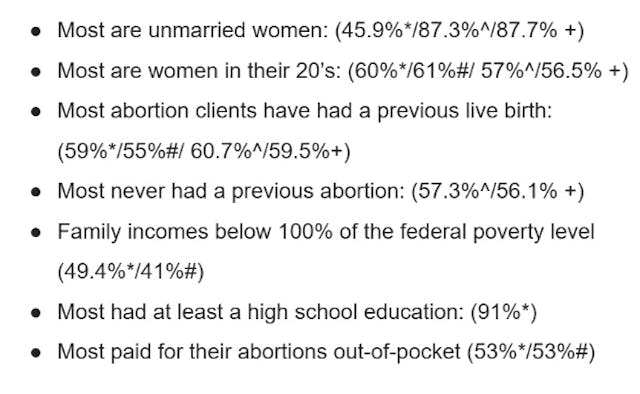
However, in 2022, the CDC published data which revealed that women in their twenties, single women, women with a previous live birth, those who never had a previous induced abortion, and Black women made up the majority of abortions in the various categories for 2022.
The CDC found that in 2022, just 12.3% of women who obtained an abortion were married, while 87.7% were unmarried. And while married women saw an abortion ratio of 37 abortions per 1,000 live births, single unmarried women had 376 abortions per 1,000 live births.
Abortion Numbers by Race
In June of 2024, Guttmacher reported that between June 2021 and July 2022, “people obtaining an abortion were Black (29%), Latinx (30%) or non-Hispanic White (30%). Four percent were Asian and 7% identified as another race or ethnicity or as more than one race.”
In 2022, Black women again made up the highest percentages, rate, and ratio of all abortions from 32 areas which reported on abortions by race or ethnicity in 2022. Of abortions recorded in the 32 reporting areas to the CDC by race or ethnicity in 2022:
Black women — 39.5% of abortions (134,308)
White women — 31.9% of abortions (108,642)
Hispanic women — 21.2% of abortions (72,241)
Other races — 7.3% of abortions (24,932)
According to 2022 data, 11.7% of the population in the United States is Black. Live Action News will analyze abortions by race and ethnicity more thoroughly in a separate article.
Read more past reports on who has the most abortions here. Read more on abortions by race and ethnicity here.
While nationally the trend is heading upward, in places like New York City, Black births have now outpaced Black abortions for the past several years.
Prior to and including 2016, the data revealed that more Black babies were aborted in NYC than had been born. However, in 2017 that trend began to reverse, and continued in 2020 (the latest year recorded), where NYC documented 18,162 Black births and 14,043 abortions of Black babies that same year. The latest available data for 2021 revealed that NYC documented 17,608 live Black births and 14,959 abortions of Black babies.
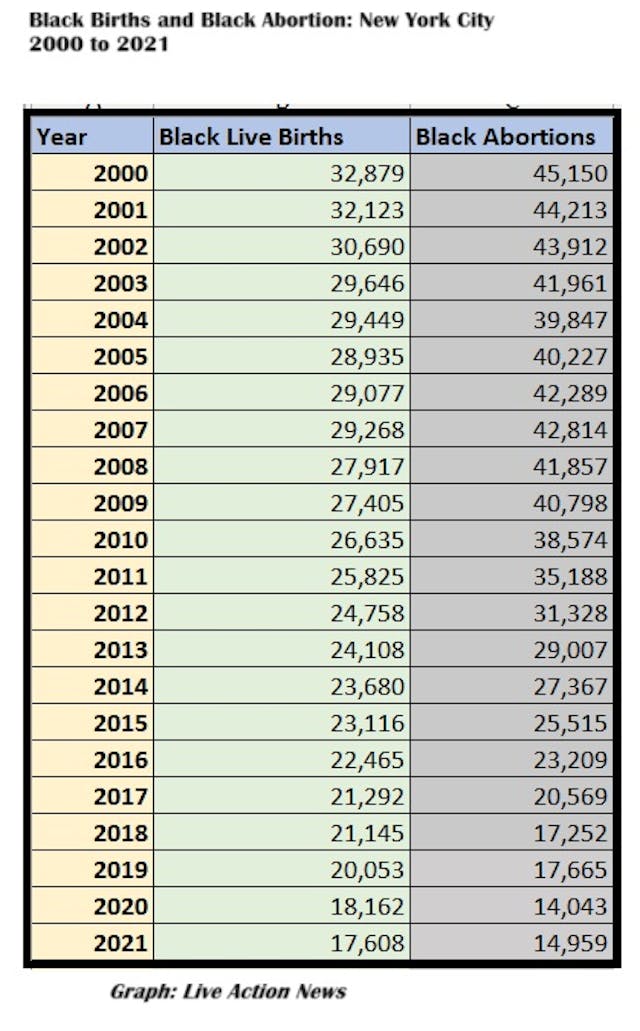
Abortion-Related Deaths
The latest data from the CDC for 2021 recorded six abortion-related deaths of women for 2020. In 2022 CDC recorded five abortion-related deaths from legally induced abortions in 2021. This reveals that nearly a dozen women died from legal abortions in just the past two recorded years. Yet the media appears uninterested in the deaths of these women.
The government agency defines an abortion-related death as “a death resulting from a direct complication of an abortion (legal or illegal), an indirect complication caused by a chain of events initiated by an abortion, or an aggravation of a pre-existing condition by the physiologic effects of abortion.” The CDC again noted that “An abortion is categorized as legal when it is performed by a licensed clinician within the limits of state or jurisdiction law.”
The CDC also noted that from 1998 to 2021, abortion surveillance data reported to the CDC… excluded “nine reporting areas” which “did not report abortion data every year during this period.” These non-reporting areas included “Alaska, 1998–2000; California, 1998–2021; the District of Columbia, 2016; Louisiana, 2005; Maryland, 2007–2021; New Hampshire, 1998–2021; New Jersey 2021; Oklahoma, 1998–1999; and West Virginia, 2003–2004.”
In other words, while six abortion-related deaths were recorded in 2020, these did not include abortion deaths that might have occurred in states like California, Maryland, or New Hampshire.
The number of published abortion-related deaths has now reached 465 — all deaths from legal abortion recorded by the CDC between 1973 and 2021 — with additional amounts reportedly dying from illegal abortions.
Editor’s Note, 8/19/24: This article has been updated with the most recent information and graphs available at this time.
Editor’s Note, 12/2/24: This article has been updated from 2021 CDC data to 2022 CDC data, however, an archived version of this article contains 2021 data not removed.
Editor’s Note, 4/9/25: This article has been updated with new FDA data. This article may continue to be updated as new information and statistics become available.
Editor’s Note, 4/16/25: This article has been updated with new Guttmacher 2024 data. This article may continue to be updated as new data becomes available.
Editor’s Note, 5/19/25: This article has been updated with the most recent Planned Parenthood data from 2023-24. This article may continue to be updated as new data becomes available.
Editor's Note, 11/7/25: This article has been updated with revised Guttmacher data for 2023, 2024, and the first half of 2025. This article may continue to be updated as new data becomes available.
Live Action News is pro-life news and commentary from a pro-life perspective.
Contact editor@liveaction.org for questions, corrections, or if you are seeking permission to reprint any Live Action News content.
Guest Articles: To submit a guest article to Live Action News, email editor@liveaction.org with an attached Word document of 800-1000 words. Please also attach any photos relevant to your submission if applicable. If your submission is accepted for publication, you will be notified within three weeks. Guest articles are not compensated (see our Open License Agreement). Thank you for your interest in Live Action News!

Nancy Flanders
·
Analysis
Nancy Flanders
·
Newsbreak
Angeline Tan
·
Human Interest
Nancy Flanders
·
Issues
Nancy Flanders
·
Pop Culture
Cassy Cooke
·
Abortion Pill
Carole Novielli
·
Abortion Pill
Carole Novielli
·
Investigative
Carole Novielli
·
Abortion Pill
Carole Novielli
·
Investigative
Carole Novielli
·